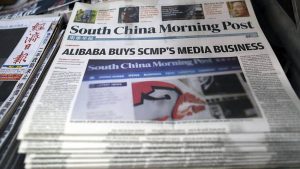
Investing in China Poses Significant Risks: Strategist
In recent market developments, positive fourth-quarter earnings results for Taiwan Semiconductor (TSM) have provided a glimmer of hope for the semiconductor sector, boosting other chip stocks. Investors, eager for signs of recovery in the industry, have found solace in the potential end of troubles for semiconductor companies. However, amidst this positive news, mixed economic reports out of China have cast a shadow on investor sentiment, prompting discussions on the challenges and risks associated with investing in China-exposed companies.
The Experts Weigh In
James Early, Chief Investment Officer at BBAE, and Dory Wiley, President and CEO of Commerce Street Capital, joined Yahoo Finance to share their insights into the Chinese markets and shed light on factors investors should consider when navigating the complexities of investing in China.
Early pointed out that he does not see the Chinese economy as a significant driver for the semiconductor industry. Instead, he identified regulation as the primary influence on the sector. Drawing a vivid analogy, Early compared China’s economic struggles to an adult child attempting to move out of their parent’s basement. He emphasized the challenges China faces in establishing itself as a consumer-driven economy, with consumer spending accounting for only 53% of its economy compared to the U.S.’s 68%.
Wiley, on the other hand, expressed a cautious stance on investing in China, going so far as to say, “China is almost uninvestable.” He highlighted several fundamental reasons for this viewpoint, including a decline in exports, population decrease, a 30% drop in the market, real estate and government debt issues, a lack of new construction, and a concerning shift in politics from a party dictatorship to a more centralized, person-centric form of governance. Wiley emphasized that the country is moving in the wrong direction economically and politically.
Market Analysis
As market watchers digest the contrasting news from Taiwan Semiconductor and China, questions arise regarding which factors will play a more significant role in influencing the semiconductor industry’s future – the internal dynamics of companies or the broader economic landscape in China.
Madison Mills, the host of the discussion, framed the debate around TSMC’s positive performance and China’s disappointing economic data. Seeking insights into the future of the semiconductor index, she questioned whether China’s economic struggles or company-specific news would have a more significant impact.
James Early reiterated his belief that company-specific news, rather than China’s economic performance, would be the primary driver for the semiconductor industry. He explained that the semiconductor sector is more influenced by regulations than consumer demand and highlighted the efforts of semiconductor companies to make strategic purchases before potential regulatory changes.
AI and Semiconductor Investments
Switching gears, the conversation moved to specific stocks, with a focus on NVIDIA, a company well-regarded for its strong performance in the past year. Dory Wiley, an NVIDIA bull, identified AI as a crucial theme, positioning NVIDIA as a key player in this space. While expressing enthusiasm for NVIDIA, Wiley also made it clear that he is wary of exposure to China, reiterating his belief that China is currently an unattractive investment destination.
Wiley justified his cautious stance on China by pointing out a series of challenges facing the country, including a decline in exports, a shrinking population, a 30% market decline for three consecutive years, real estate and government debt issues, a lack of new construction, and a concerning shift in political dynamics. He emphasized the importance of steering clear of China in favor of investments in AI and semiconductors.
Conclusion
In conclusion, the discussion between James Early and Dory Wiley provides valuable insights into the nuanced landscape of investing in China. While positive signals from the semiconductor sector bring optimism to investors, the challenges and uncertainties surrounding the Chinese economy raise cautionary flags. The experts’ contrasting views on the role of China in influencing semiconductor stocks, along with Wiley’s strong reservations about investing in China, contribute to a comprehensive understanding of the complex dynamics at play in the global market. As investors navigate these turbulent waters, the question remains: Is China truly “almost uninvestable,” or are there opportunities hidden within the challenges? Only time will tell as the world watches the unfolding developments in the Chinese economy and the semiconductor industry.















Comments